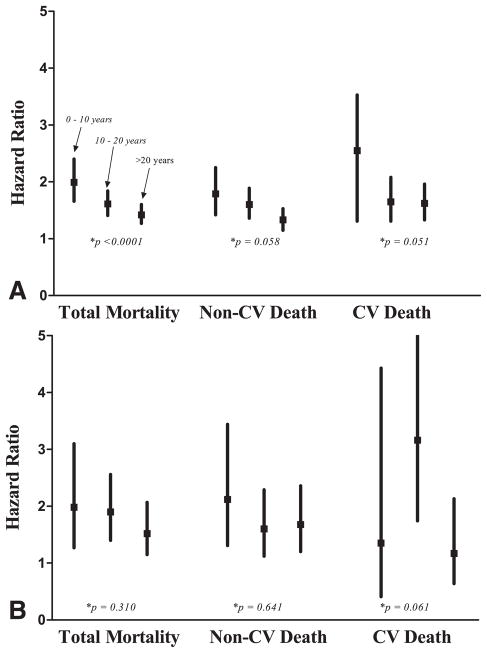Figure 1.
A, Multivariable-adjusted hazard ratios (95% confidence intervals [CI]) for low fitness and Total Mortality, Non-CVD Death, and CVD Death for 0 to 10 years, 10 to 20 years, and >20 years of follow-up in men. B, Multivariable-adjusted hazard ratios (95% CI) for low fitness and Total Mortality, Non-CVD Death, and CVD Death for 0 to 10 years, 10 to 20 years, and >20 years of follow-up in women. Both models were adjusted for baseline continuous variables, including age, systolic blood pressure, serum total cholesterol, body mass index, and triglycerides as well as categorical variables, including smoking (yes/no) and diabetes (yes/no). P<0.05 suggests that the strength of the association between fitness and the outcome was different across the follow-up periods.

